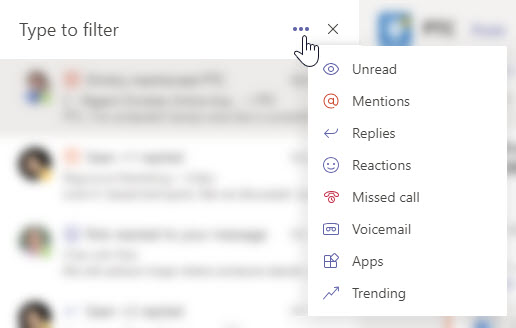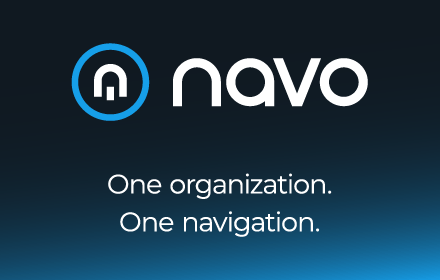
If you feel like it’s impossible to find what you need in Microsoft Teams, this blog post is for you.
Whenever a coworker curses Teams search after looking for what feels like forever for a conversation or file, I’m able to magically find what they’re looking for with a few different strategies.
If you’d like to learn how to use these strategies to find what you need in Microsoft Teams, keep reading!
Ask Questions to Gather Clues
You can find valuable clues that will help you search more effectively for messages, files, and chats in Microsoft Teams by asking questions about what you are looking for.
Here are some questions that rattle through my mind whenever I try to find what I need in Teams:
- Was this posted or edited recently?
- Did anyone use a reaction on this message?
- Do I know which team is this in?
- Do I know which channel this is in?
- What are some keywords that might be in this message?
- Who posted this message?
- When was this message posted?
- Who replied to this message?
- How long ago was this message posted?
- Is a file attached to this message?
- What type of file am I looking for?
Check your Recent Activity and Recently Edited Files
If I’m looking for something that I’ve recently posted, replied to, or worked on, the first places I check are “My Activity” and “Recent Files“. My Activity
View messages you’ve recently sent in Microsoft Teams by going to your Activity feed, clicking on the word Feed at the top, then choosing My Activity. Click on the funnel icon to filter your activity by a word, phrase, or combination of letters.


Recent Files
View files you’ve recently edited by going to Files and choosing the Recent view. You’ll see a list of files, where they’re located, and the date that you modified each file. You can open, edit, download, and get links to files directly from this view.

Filter the Activity Feed
Type to Filter allows you to filter your Activity Feed by a word, phrase, or combination of letters.
Other filters hidden under the ellipses (…) will show you unread messages, messages and chats where you are mentioned, replies, or reactions.

Filter Search Results
The Teams search bar is usually the first place people go when they need to find a conversation or file.
The search filters in Microsoft Teams that can help you find what you need more easily are located just above your search results – hidden in plain sight.
Filter Message Search Results in Microsoft Teams
- Name
Type the name of the person who posted the message that you are looking for. - Type
Choose whether you are searching for a private or group chat conversation, a message posted in a channel, or both. - Subject
When you compose a message in a Teams channel, you can use rich text formatting to add a subject like you would with an email. The Subject filter allows you to search for Teams channel messages with your search term in the subject. - Date
The Date filter allows you to filter Teams search results by different time frames relative to the current date: Today, Yesterday, This Week, Last Week, This Month, Last Month, This Year, and Last Year. If you want to search for messages from a specific date, type “Sent:” before a date, e.g. “Sent:12/17/2019”. - Team
Filter your search results to a specific team. - Channel
Once you’ve filtered your search results to search within a specific team, you can narrow your search even further by filtering to a channel. - My @mentions
Check this box to only show messages where you have been mentioned. - Has attachment
Check this box to only show messages with attachments.
Filter Files Search Results in Microsoft Teams
- Team
Select from a list of teams that you belong to. - File Type
Narrow your search result by file type: Excel, PowerPoint, Word, Images, OneNote, Text File, or PDF. - Modified By
Type the name of a person to see files that they have modified and the date that they modified each file.
Use Search Operators to Narrow Microsoft Teams Search Results
Search operators can be used in the Microsoft Teams search bar to return more specific search results.
Use an asterisk (*) to find results with words that begin with…
Use an asterisk at the end of your search term to find messages and files with words that begin with the same letters.
For example, “sign*” will surface results with words that begin with “sign” (sign, signal, signature, signed, significant, etc).
Search for a Phrase by Wrapping Words Inside Quotation Marks (“)
Wrap phrases inside of quotation marks to ensure that phrases are not split up in your search results.
For example, if you search for holiday party, anything with the word “party” or “holiday” in it will appear.
This means you would have to sift through results that are not related to a holiday party. Or, holiday-related messages that have nothing to do with a party.
If you wrapped the phrase “holiday party” inside quotation marks, search would recognize this phrase and surface more relevant results.
Use a Hyphen (-) or “NOT” to Exclude Words From Search Results
Use a hyphen directly before a word to ensure that it is excluded from search results.
For example, you might look for fun messages about your staff party and find boring posts about third-party software.
Search for “party -third”, and messages containing the term “third-party” will not be included. If you’re feeling sassy and want to type “NOT” in all caps (’cause it’s fun) “party NOT third” will surface the same results.
Consider Reorganizing Your Teams and Channels
If it feels like you can’t find anything in Microsoft Teams, it’s possible that your teams and channels may not be set up in the best way for how you get work done.
It’s possible that you have too many teams and channels or not enough, or that information is not grouped in a way that makes sense.
At Regroove, we specialize in helping organizations of all kinds use Microsoft Teams to improve their communication, boost productivity, and simplify their business processes.
In all of our Microsoft Teams consulting projects, we take time to understand the structure of your business, how your information is organized, and how your people get things done.
By gathering requirements about your business, we can formulate a plan for how we will set up Microsoft Teams, specific to your organization, before we create your teams and channels.
Another important piece of our projects is coaching and knowledge transfer; during a project, our ideal approach is one where we can empower you and help you avoid relying on help from others.
After our project is done, we want you to feel confident in your ability to maintain and improve upon your Microsoft Teams so that it can grow with your business.
If you’re considering a major reorganization of your teams and channels, reach out to us to start the conversation about how we might help you better leverage Microsoft Teams to achieve your business goals.

Connect Your Other Tools and Services to Microsoft Teams
If your business has recently started using Microsoft Teams, or is considering making the move, it might seem like you have to move everything over to Teams.
It’s important to plan how you will move your information and processes into Teams and whether they should be moved at all; without proper consideration, things can quickly become disorganized, which might be why you can’t find anything in Microsoft Teams.
Consider leaving your other tools and services where they are and connecting them to Microsoft Teams. Microsoft Teams has a large catalog of add-ins that includes popular services such as Confluence, Jira, Evernote, Trello, and even Zoom.
Navo is one of our favorite apps for Microsoft Teams because it makes it easier for us to find what we need and connects us to the other tools and services we use outside of Teams.
We can use Navo outside of Teams too, so it’s always only a click away to save more time in our days.

Go Find What You Need in Microsoft Teams!
In conclusion, Microsoft Teams can seem difficult to navigate, but with a few tricks up your sleeve, you can find what you need with relative ease.
If any of these tips helped you, leave me a comment below to let me know!